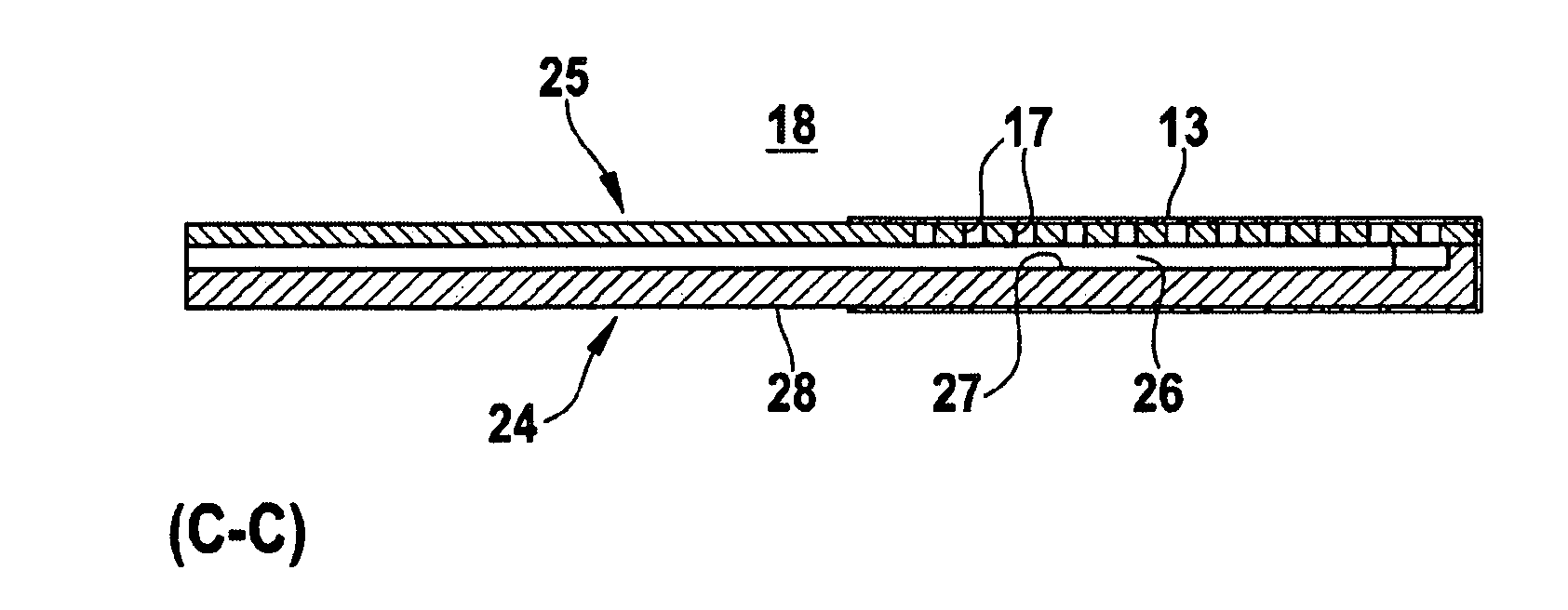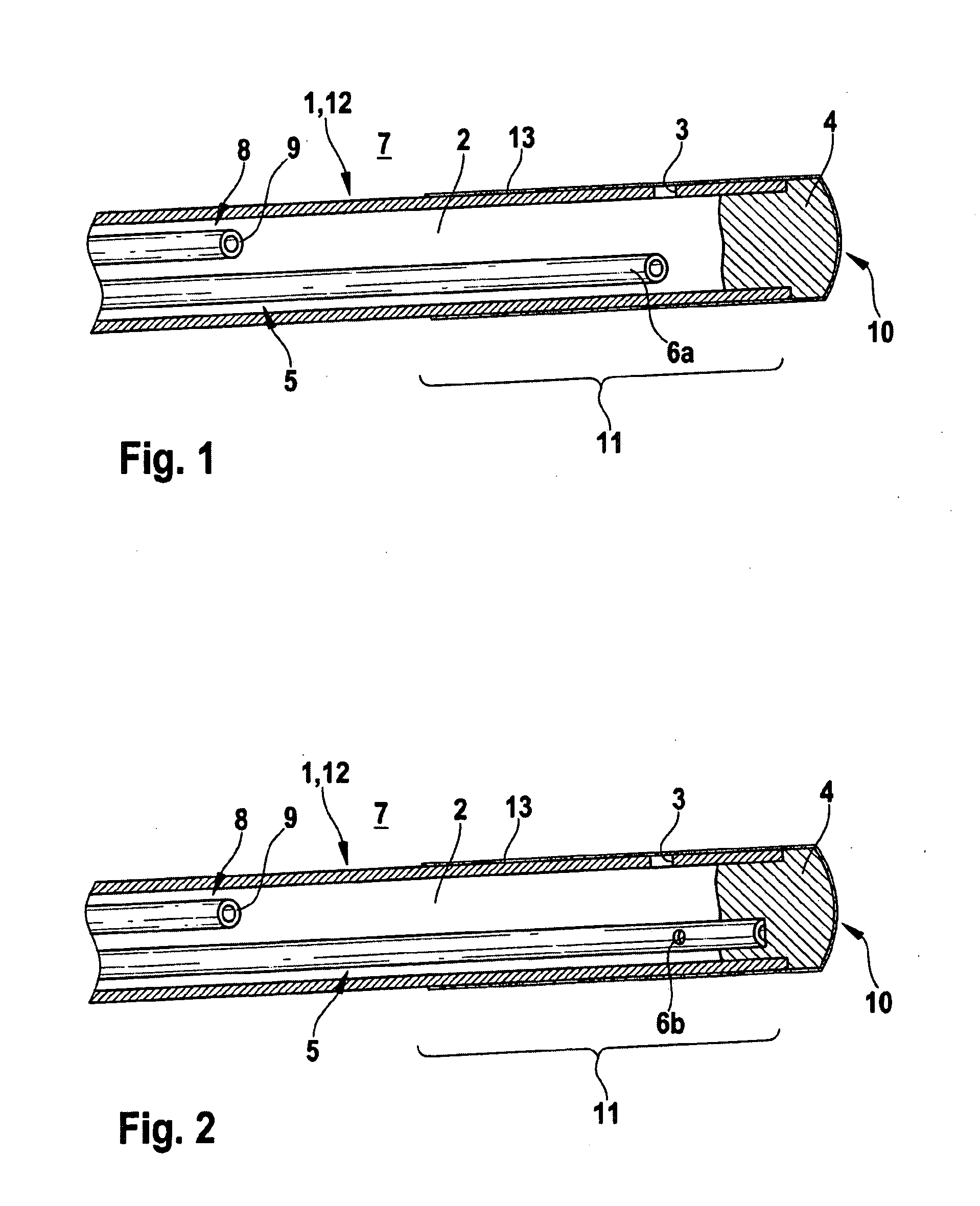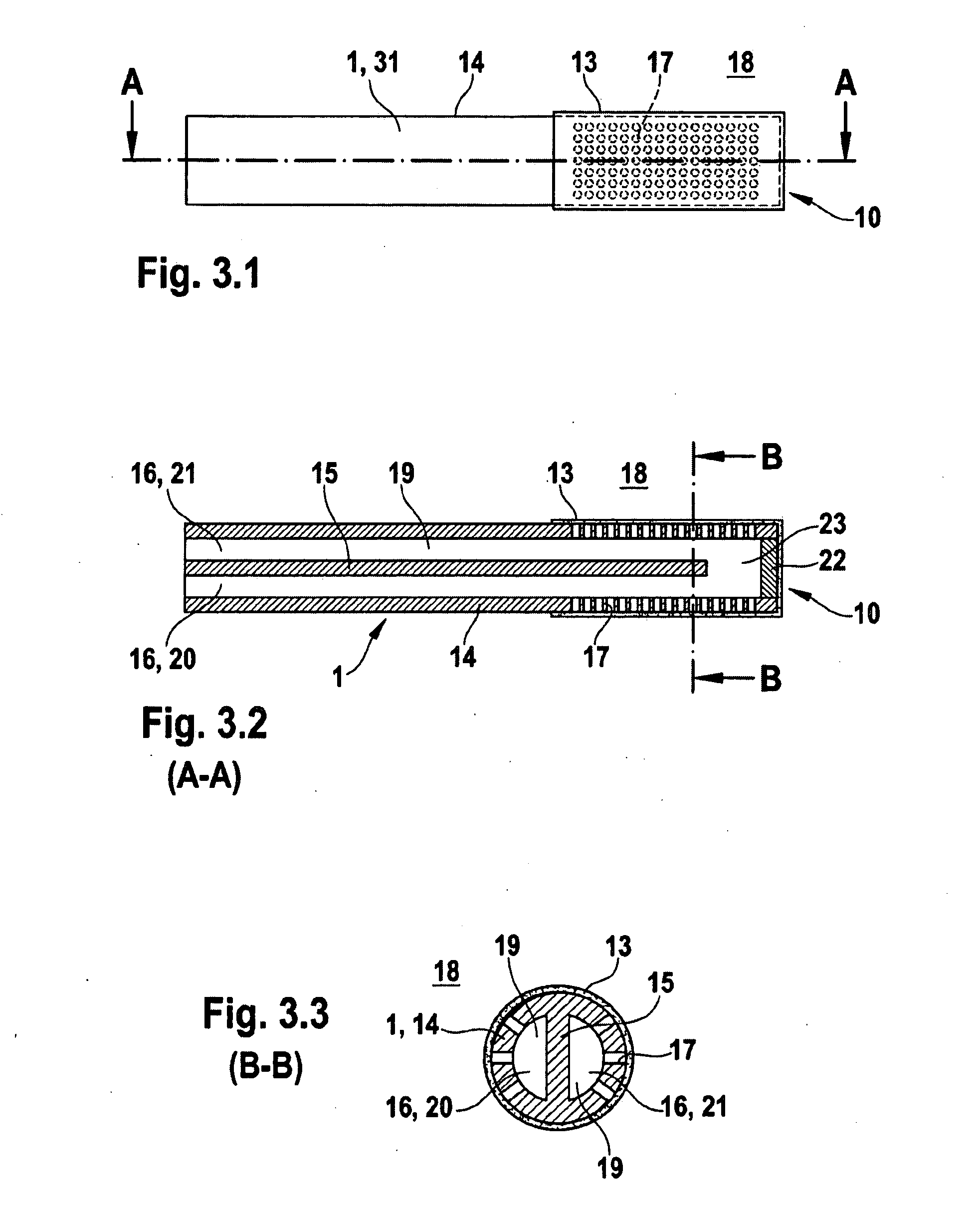Microdialysis catheter and process for manufacture
a microdialysis catheter and manufacturing process technology, applied in the field of microdialysis catheter manufacturing and to the microdialysis catheter, can solve the problems of high cost, high production cost, and inability to cover the canal structure with known membrane materials while maintaining the porous properties of the membrane, etc., to achieve the effect of short diffusion time of analyte and improved biocompatibility
- Summary
- Abstract
- Description
- Claims
- Application Information
AI Technical Summary
Benefits of technology
Problems solved by technology
Method used
Image
Examples
third embodiment
[0041]FIGS. 3.1 to 3.3 show schematically a microdialysis catheter according to an embodiment of the invention, with a carrier in the form of a multi-lumen tube.
[0042]One possible variant of a tubular carrier 1 with fluid channels is a multi-lumen tube 31. FIG. 3.1 shows a top view, FIG. 3.2 a longitudinal section (along A-A in FIG. 3.1) and FIG. 3.3 a transverse section (along B-B in FIG. 3.2) of an enlarged view of such a microdialysis catheter based on a multi-lumen tube.
[0043]The tubular outside wall 14 of the multi-lumen tube, i.e. a tube in which two lumina 16 with passage of fluid between them prevented by a dividing wall 15 are created, has side openings 17 in the area which, when the microdialysis catheter is in use, is inside the body, said openings allowing a connection for the passage of fluid to be made from the surrounding outer space 18 to the inner space 19 in the microdialysis catheter.
[0044]The dividing wall 15 between the two lumina 16 of the multi-lumen tube is, ...
fourth embodiment
[0048]FIGS. 4.1 to 4.3 show schematically a microdialysis catheter according to an embodiment of the invention with a carrier in the form of a flat substrate with a cover.
[0049]According to another embodiment of the present invention, the carrier of the microdialysis catheter is a flat substrate with a cover. FIG. 4.1 shows a top view of the individual layers in such a microdialysis catheter, FIG. 4.2 a longitudinal section (along C-C in FIG. 4.1) and FIG. 4.3 a transverse section (along D-D in FIG. 4.1) through such a microdialysis catheter based on a flat substrate 24 with a cover 25. The sections are shown enlarged in FIGS. 4.2 and 4.3.
[0050]The flat substrate 24 contains as channel a canal structure 26 for supplying a perfusion fluid and for removing a dialysate. The canal structure 26 is bounded by an outer wall 29 and an inner ridge 30 and closed by the cover 25 of the flat substrate 24, where the cover 25 has a large number of openings 17 which are covered by a non-porous coa...
PUM
| Property | Measurement | Unit |
|---|---|---|
| diameter | aaaaa | aaaaa |
| area | aaaaa | aaaaa |
| diameter | aaaaa | aaaaa |
Abstract
Description
Claims
Application Information
 Login to View More
Login to View More - R&D
- Intellectual Property
- Life Sciences
- Materials
- Tech Scout
- Unparalleled Data Quality
- Higher Quality Content
- 60% Fewer Hallucinations
Browse by: Latest US Patents, China's latest patents, Technical Efficacy Thesaurus, Application Domain, Technology Topic, Popular Technical Reports.
© 2025 PatSnap. All rights reserved.Legal|Privacy policy|Modern Slavery Act Transparency Statement|Sitemap|About US| Contact US: help@patsnap.com



